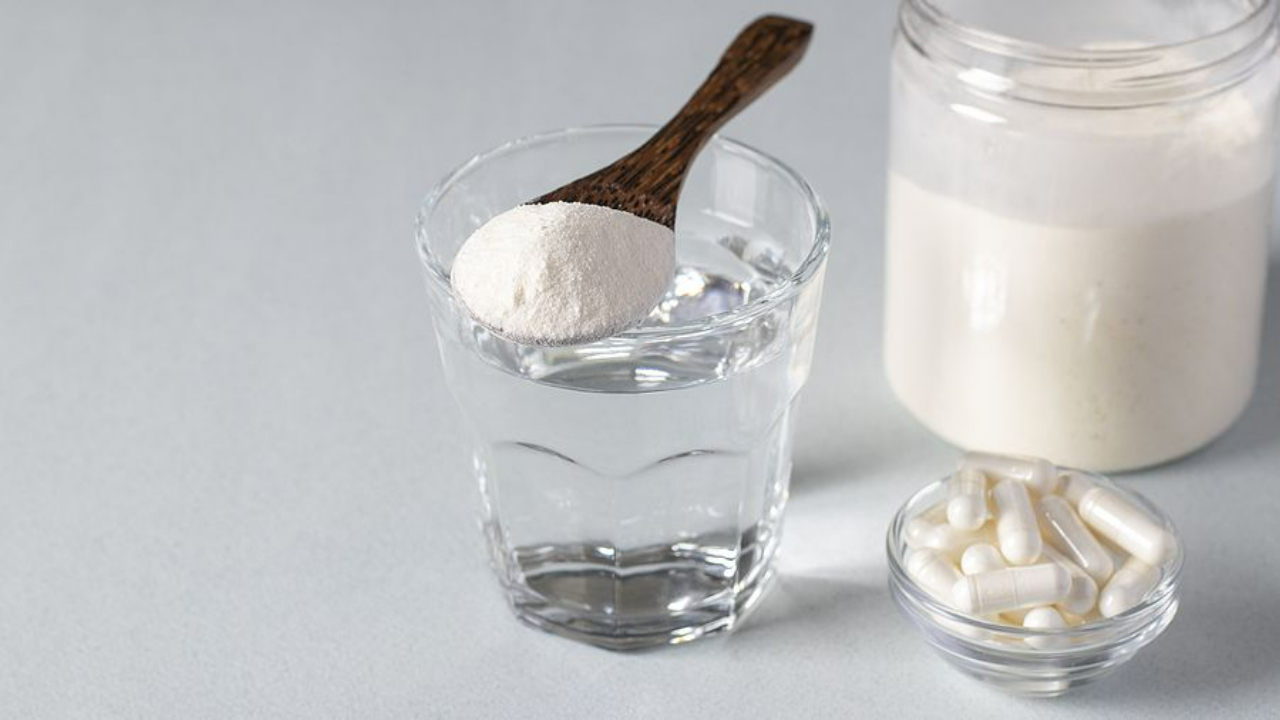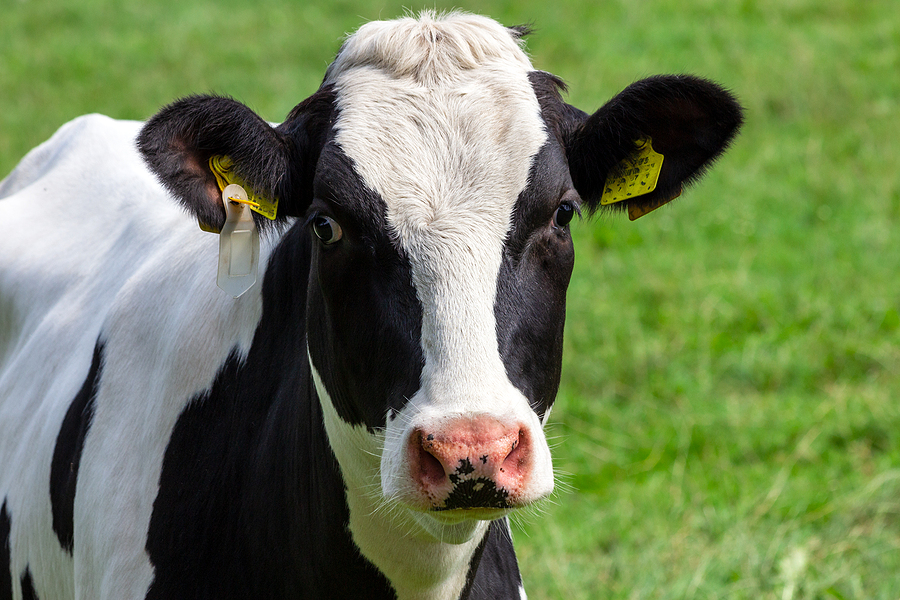Colostrum – Can a Superfood for Babies Create Super Health in Grown-Ups?

Call it God or Nature. Whatever you hold responsible for the propagation of life, the process of bringing a human or other mammalian baby into this world is filled with complexities, wonder, and miracles.
Consider the helplessness of a newborn. It is fully reliant upon the mother for protection, nourishment, and comfort, and then . . . beyond the initial oxytocin-bond and warm-blooded emotion, the newborn must acquire immunity, growth factors, and critical proteins and saccharides to initiate cell division and healthy growth.
And somehow, it arrives! Enter COLOSTRUM.
Colostrum is the first liquid produced in the mammary glands of mammals (humans included) immediately after giving birth and it is precisely what Nature or God intended. A powerful bioactive formula containing a super-dose of Immunoglobulins, Lactoferrin (an iron-binding protein with multi-faceted far-reaching support for the immune system), cell and tissue growth factors, amino acids, and a whopping supply of micronutrients to kick-start the newborn’s establishment of self-reliant health.
Human mothers produce colostrum immediately post-partum, and so too do cows. Cows, in fact, produce amounts in excess of that needed for calf needs, and in that Bovine Colostrum has become a nutritional secret among super athletes. For humans seeking optimal health, recovery from compromised immunity, and physical betterment, Colostrum’s growth in supplement circles has become astronomical.
Is this legit? Does Colostrum merit the sudden explosive interest?
Yes. And Yes.
I’ve used Colostrum in my smoothies and yogurt for years, and it remains one of my daily supplements (currently blended into my morning Thrive shake).
Even with my purported recognition of its value and my willingness to use it almost daily, the common questions abound when I’m invited to discuss Colostrum in the presence of fitness-wanters, athletes, or immune-compromised. The usual conversation has nothing to do with whether humans should consume colostrum upon being born, but rather whether adult humans benefit by the supplemental addition of Bovine Colostrum (BC) so let’s pick it up right there.
WHAT’S IN COLOSTRUM?
If we were simply to look at the nutritional components of BC, we’d find higher BCAA content than we’d find in milk, we’d find a generous supply of Conjugated Linoleic Acid, and we’d find an unmatched mix of antimicrobial, anti-viral, and antifungal compounds. This is in addition to the immune factors I mentioned earlier.
If we look even further, we can identify specific growth factors that support healthy cell growth, tissue growth, and structural development including the following two:
- Transforming growth factor (TgF) - stimulates connective tissue re-genesis and plays a vital role in repairing both skeletal structures and the lining of the gut.
- Insulin-like growth factor 1 (IgF-1) - a precursor of GH THAT contributes to the increase of lean body mass and muscle tissue. IgF-1 also contributes to DNA repair and healthy regulation of blood sugar. As if that’s not enough, IgF-1 has the potential to positively affect every bodily system and nearly every human cell.
That brings us to the most obvious question.
“Sure, Phil, the nutrients sound great . . . but isn’t BC from cows . . . and accordingly . . . for cows?”
ANSWER: Yes, Bovine Colostrum is from cows and for cows, and while the nutrient profile is overwhelmingly in line with adult human health optimization, the question of whether a cow-produced compound is healthful for humans is both a logical and an age-old historic inquiry. It’s been asked repeatedly ad nauseum related to any bovine milk products.
In order to provide a true answer, we’d have to look at science, the most recent research, and identify what a predominance of the evidence suggests when considering both health benefit and risk of adverse events.
In a moment we’ll weight out the evidence . . . but . . .
. . . before I get to the scientific literature on the efficacy and safety of Bovine Colostrum for Human Adults, I want to take you back to a study that contributed to my initial interest in and awareness of the benefits of BV supplementation.
COLOSTRUM AND ATHLETES

In a 1997 study performed on strength and endurance athletes, the addition of BV resulted in dramatic improvement with rapid escalations in strength and endurance. Remarkably, at a time when athletes sought the Muscle-Building Holy Grail (something legal that would elevate Growth Hormone) this study produced unexpected outcomes. The subjects’ IGF-1 levels were higher after intensive training. This likely stimulates an increase in GH and its anabolic effect, and the outcome runs completely counter to what athletes typically experience post-training (a drop in measurable IgF-1).
Reference: Mero A, Miikkulainen H, et al. Effects of bovine colostrum supplementation on serum IGF-I, IgG, hormone, and saliva IgA during training. J Appl Physiol (1985). 1997 Oct;83(4):1144-51.
That got my attention. Back then. The thought that a simple compound ingested as reconstituted powder could have an anabolic effect in hard-training athletes was an eye-opener.
A myriad of studies followed over the next 5 or 6 years providing an impressive body of evidence, not only that BC supplementation can improve performance and protein synthesis (muscle growth) in athletes, but also that it improved many markers of health.
Reference: Mero A, Tiensuu T, Pakkanen R, Takala T. Effects of pastilles containing bovine colostrum on health of athletes. XXVIth FIMS World Congress of Sports Medicine, Orlando, Florida, May 30-June 3, Program and Abstracts.1998
So, is supplementation with BV of value to strength training and endurance athletes?
Yes. Clearly.
Let’s move on to consider whether the general population, including the moms and dads and working force and community members who are not fully dedicated to training and healthy eating stand to benefit. Can Bovine Colostrum help them?
Yes again.
In fact, over the next decade (beyond the initial “athlete” studies”) strong evidence emerged demonstrating the benefit of BV in reducing inflammation (the root cause of chronic disease) in humans.
Reference: Yadav R, Angolkar T, Kaur G, Buttar HS. Antibacterial and Antiinflammatory Properties of Bovine Colostrum. Inflamm Allergy Drug Discov. 2016;10(1):49-53.
BUT WAIT . . . COW MILK, FOR PEOPLE?
It’s clear that there will be differences between bovine and human colostrum, and while I’ve seen cautionary articles suggesting the protein constituents are “different,” as are the species-specific pathogens, the massive body of research leans far to the side of “human benefit.”
In fact, there are some nutritional advantages (for adult humans) to the combined ingredients in BV over the nutritional profile humans produce for infants. Of course, the nutrient value is significantly greater if the colostrum is sourced from grass-fed sources (higher levels of CLA, Beta-Carotene, and greater human protein bioavailability).
I’d only select dairy products, whey and Colostrum included, that are documented and verified as having a grass-fed source.

Here's a recent study that can help you explore the differences in composition and quality between grass-fed and conventionally raised:
Alothman M, Hogan SA, et al. The "Grass-Fed" Milk Story: Understanding the Impact of Pasture Feeding on the Composition and Quality of Bovine Milk. Foods. 2019 Aug 17;8(8):350.
If any ethical questions are raised related to “depriving calves,” know that the dairy industry begins to feed calves (with nutrients other than their mothers’ milk) after the second full day of the calf’s life. Cow moms produce colostrum for 5 days, so over the course of the remaining three days, about 25 liters of BV go to waste. Considering the number of reproducing cows in dairy farms around the world, we’re talking about a supply upwards of billions of liters.
If the naysayers begin to look at the latest research, they’ll find much of it is dedicated to the best production standards for ensuring BV provides ideal human nutrition. It’s true that higher temperature processing may denature some of the proteins, there are a myriad of technologies that preserve nutrient quality and the products seem to get better and better.
Arslan A, Kaplan M, Duman H, et al. Bovine Colostrum and Its Potential for Human Health and Nutrition. Front Nutr. 2021 Jun 21;8:651721.
slan A, Kaplan M, Duman H, et al. Production of Bovine Colostrum for Human Consumption to Improve Health. Front Pharmacol. 2022 Jan 3;12:796824. doi: 10.3389/fphar.2021.796824. PMID: 35046820; PMCID: PMC8762312.
Weighing out the science, the preponderance of the evidence as I interpret it is clear.
Colostrum is a valuable supplemental vehicle for optimizing health, recovery, and immune function.
Not only for babies.
And so, I’ll continue to add grass-fed bovine colostrum to my morning shake and throw a scoop in my grass-fed yogurt. If I begin to Moo or find myself compelled to graze in my backyard, you’ll be the first to know. So far so good.
Get The 21 Day Metabolic Reboot
Get details on this explosively powerful Human Betterment Program
